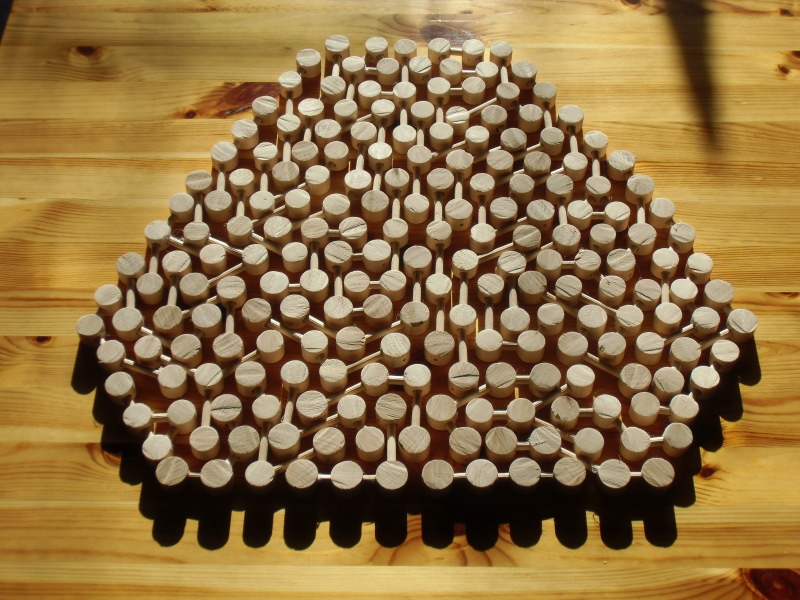

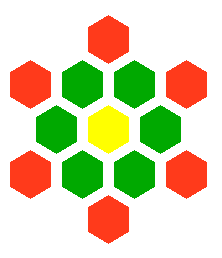
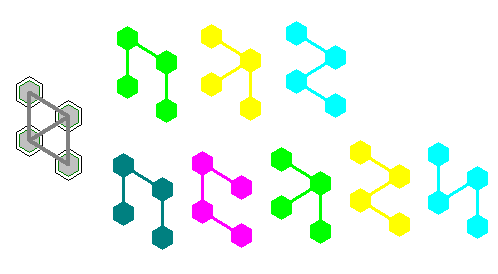
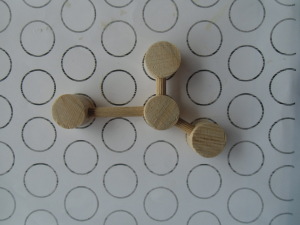
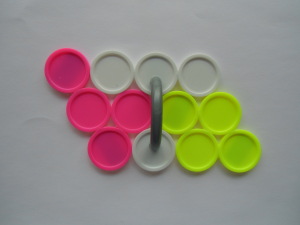
| Number of Hexagons | Number of Pieces | Total Area | Constructions | |
|---|---|---|---|---|
| Two-sided Pieces | 3 | 8 | 24 | rectangle (3*4+4*3); star |
| 4 | 52 | 208 | hexagon with rhomb hole; hexagon with sides 12-6-12-6-12-6; trapezium; parallelogram 16x13; parallelogram 26x8; pairs of congruent rectangles; four congruent berries; four congruent rectangles(4*7+3*8) |
|
| 5 | 433 | 2165 | rectangle (59*19+58*18); rectangle (19*59+18*58); rectangle (31*35+30*36); rectangle (36*30+35*31); rectangle (167x7+166x6); rectangle (7x167+6x166); |
|
| 3 or 4 | 60 | 232 | pair of a size 9 hexagon and a size 5 triangle | |
| 2..4 | 62 | 236 | pair of hexagons of size 3 and 9 | |
| One-sided Pieces | 3 | 10 | 30 | rectangles with holes; parallelogram; trapezium; wheel; hexagon with sides 3-4-4-3-4-4 |
| 4 | 89 | 356 | hexagon with sides 20-4-13-20-13-4; hexagon with sides 43-5-4-43-5-4; lots of rectangles; set of two rhombs of size 16 and 10; | |
| 5 | 816 | 4080 | four hexagonal rings (19-2); set of hexagons with sizes of 20,20,25; rectangle (100*21+99*20); rectangle (21*100+20*99) |
|
| 3 or 4 | 99 | 386 | pair of hexagons of size 8 and 9 | |
| 2..4 | 101 | 390 | hexagonal rings (16-11) hexagonal rings (12-2) |